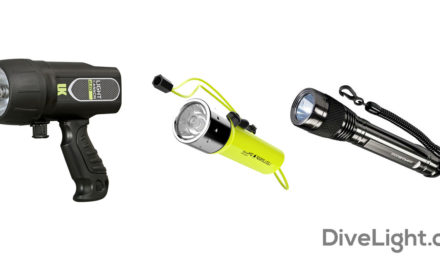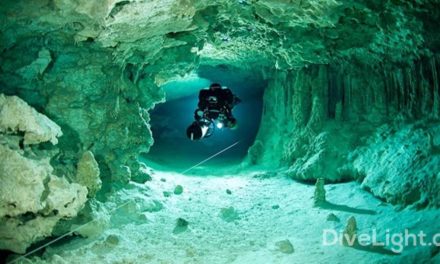As it pertains to cave diving, the more narrow the angle of your dive light’s beam, the better your diving experience is going to be. Due to the tight quarters, extremely dark situations, and various unknown factors you are going to encounter along the way, when choosing a dive light for cave diving, you do have to keep the beam angle in mind.
What is a beam angle?
This refers to the distance your light projects from one side to the other below surface. Your eyes have a range of 180 degrees; but, when wearing a mask underwater, you can cut this in half (90 degrees), or at best, 100 degrees. For this reason, dive lights with different beam angles are used when diving in different conditions. For cave divers, the dive light angle should be smaller than for bright or open dives.
What’s the right angle?
Your cave dive light beam angle should range from 7 to 12 degrees. Due to the limited visibility you have in caves and caverns, the more narrow the beam, the brighter it is going to shine in the direction/area you are pointing it. The reason you should use a narrow/focused beam for cave diving is it allows for greater distance or range in the location you are diving.
Further, with these tighter angles, the light has less of a chance of reflecting back in your face due to the control a tighter beam offers. Wider angle beams can bounce off cave walls and the various particles found in the water, reducing visibility.
With several dive lights you can purchase, when it comes to cave diving, the more narrow the beam you can find, the better. Regardless of the brand you choose, look for narrow, defined beam angles with adjustable light outputs so you’re ready for every type of cave environment.





